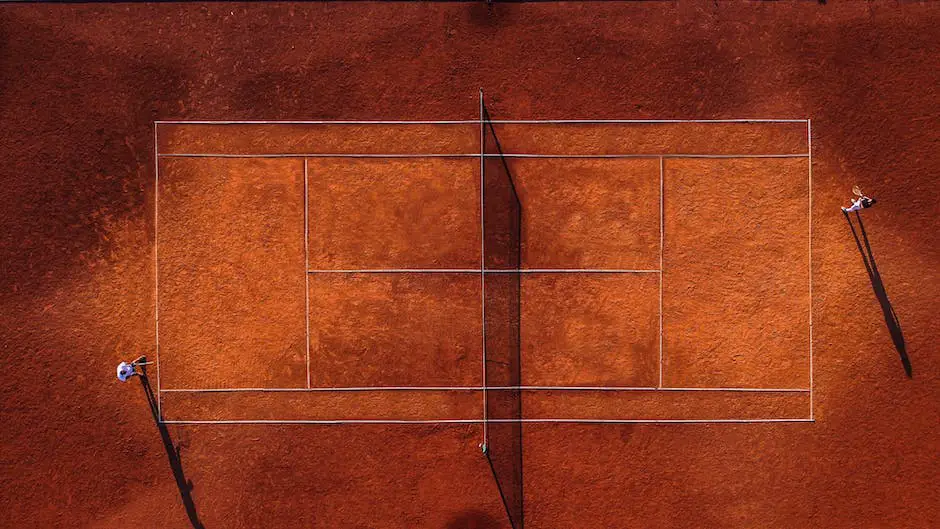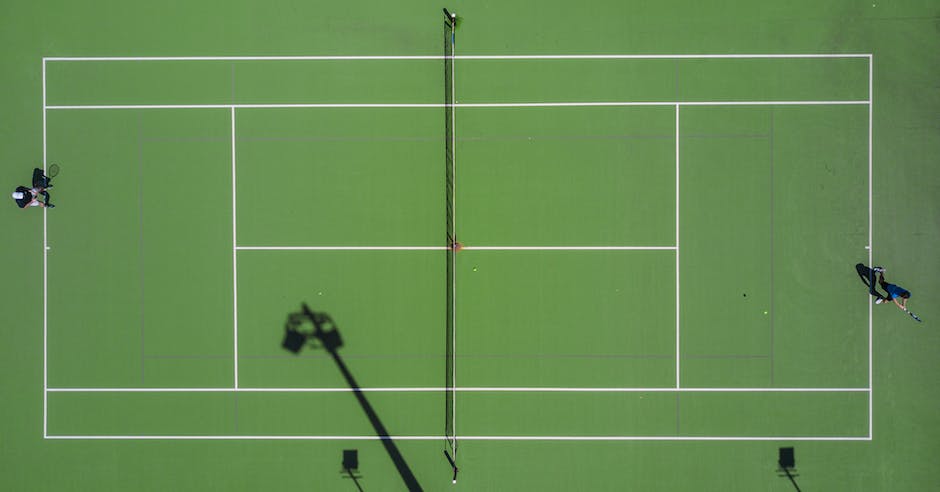Tennis in Europe has long been an integral part of the continent’s rich and diverse sports culture. The sport’s history reflects the dynamic evolution of Europe—interweaving key historical events, social transformation, and the rise of legendary sporting heroes. Ranging from grand slam tournaments to the creation of tennis greats, European tennis has brought forth immeasurable vibrance to the world of sport. Our journey will take an in-depth analysis of the historical origins of tennis in Europe, significant tournaments, legendary players, the contemporary environment, and a look towards its future prospects.
History of Tennis in Europe
Tennis Origins in Europe
The origins of tennis trace back to the 12th century in France where it was played in the form of a handball game known as “jeu de paume”, which directly translates to “game of the palm”. Many scholars attribute the game’s conception to French monks who adapted it as a recreational activity within monastery walls.
Fast forwarding a few centuries later, the game evolved to take up its current form with rackets and a slight change of name to “tenez”, which means “take” in French. This name corresponded to the phrase that would be shouted out as players served the ball.
Tennis gained particular popularity among the French aristocracy, with Louis X becoming known as the first ‘tennis-playing monarch’. The controversial Charles V and Charles IX were also avid fans, with the latter issuing the first written laws of tennis in 1571.
Evolution of Tennis in Europe
The real disruption in the game came with the invention of the lawn mower in the 19th century, which allowed grass courts to be maintained at a uniform length, making it serviceable for tennis. The first Wimbledon Championship took place in 1877, a major milestone in the evolution of tennis. This tournament marked the adaptation of tennis into a sport of international appeal. It was played on grass courts, and it formulated the established rules and practices that continue to dictate the sport today.
During the late 19th and early 20th centuries, the sport boomed in Europe, with France, England, and later, Spain and Sweden becoming the primary incubators of world-class tennis athletes. This period witnessed the establishment of prestigious tournaments like the French Open and the rise of European tennis stars like Suzanne Lenglen and Fred Perry.
Impact of World War I and II on Tennis Landscape
World War I and II had a significant impact on tennis in Europe. During the war periods, many tennis competitions were halted, and tennis took a backseat becoming more of a recreational pastime than a competitive sport. This diversion lasted until the late 1940s when global tennis tournaments regained momentum and slowly started to reclaim their pre-war glory.
Modern Tennis in Europe
In post-War Europe, tennis popularity fluctuated around the continent. Britain witnessed a decline, while European nations like Sweden, France, and Spain saw the emergence of a golden generation of tennis players.
It was in this era that tennis greats like Bjorn Borg, Mats Wilander, and Rafael Nadal marked their arrival, further establishing Europe as the hotspot for tennis. This period also saw the development of several modern tennis facilities and world-class tennis tournaments such as the Madrid Open and Italian Open across Europe.
Understanding Tennis in Europe
Tennis in Europe is an influential sport that has been tremendously shaped by the continent’s rich history, diverse culture, and technological advancements. Birthed from modest beginnings, it evolved into a symbol of sportsmanship, fair play, and healthy rivalry, making it a universally admired game. This European impact on the sport has left an indelible legacy that will undoubtedly shape the future of tennis.

Popular Tennis Tournaments in Europe
Prestigious European Tennis Tournaments
Europe, known worldwide for its prominent role in tennis, routinely hosts some of the most esteemed tournaments, drawing in professional players from across the globe. The history of these tournaments and their sanctioning tennis clubs is deeply rooted in the fabric of the respective countries’ cultures, further solidifying Europe as a significant force in international tennis.
Wimbledon Championship
Hosted by the All England Club in London since 1877, Wimbledon is the oldest tennis tournament worldwide and is regarded as the most prestigious. It is one of four Grand Slam tennis tournaments, with others located in Australia, United States and France. Wimbledon is unique in its own right as it’s the only major tournament played on grass. Its traditions include a strict dress code for competitors and the consumption of strawberries and cream by spectators. The 2021 edition saw Novak Djokovic of Serbia winning his 20th Grand Slam title in men’s singles and Ashleigh Barty of Australia winning the women’s singles.
French Open, Roland Garros
The French Open, or Roland Garros, the other Grand Slam event in Europe, is held over two weeks in Paris and is named after the French aviator Roland Garros. It is the premier clay court tennis championship in the world and the event is widely considered to be the most physically demanding tennis tournament due to the slow-playing surface and five-set men’s singles matches without a tiebreak. In its most recent tournament, held in 2021, the world saw Rafael Nadal earn his 13th title in the men’s singles and Iga Swiatek emerge as the women’s singles winner.
ATP Tour Events in Europe
In addition to the Grand Slams, Europe hosts several ATP Tour events. The Nitto ATP Finals is the second highest tier of men’s tennis tournament after the four Grand Slam tournaments. The event, held annually in November, takes place in Turin, Italy. The competition brings the top eight players in the ATP rankings together.
Another notable event, the Madrid Open, a part of the ATP World Tour Masters 1000 events, is played on outdoor clay courts. It’s often seen as a crucial warm-up to the French Open.
European Tennis Tournaments: A Defining Aspect of the Sport
European tennis tournaments are fundamental to the overall sport of tennis. Offering a significant amount of ranking points and substantial financial perks, these tournaments serve as major incentives for players. Furthermore, the diversity in court surfaces, ranging from grass and clay to hard court, creates a dynamic environment that challenges players’ adaptability and proficiency in various conditions. This diverse experience primes them for the global tennis circuit. Coupled with the age-old traditions and engaging atmosphere of these tournaments, the sport of tennis in Europe carves a distinct culture and legacy, driven by passionate players and equally enthusiastic fans. These tournaments exhibit remarkable demonstrations of talent, endurance, and sportsmanship that captivate spectators.
Prominent European Tennis Players
A Breeding Ground for Legends: Europe’s Tennis Legacy
Europe’s contributions to the world of tennis are nothing short of legendary. It has been the breeding ground for some of the game’s greatest champions, whose mastery of technique, tactical intelligence, and unwavering resolve have shaped the modern game significantly. The legacy created by these revered figures has left an indelible effect, not only on the sport itself but also on the broader worldwide tennis culture.
Prominent Tennis Players Originating from Europe
From legends such as Bjorn Borg and Steffi Graf to modern-day greats like Roger Federer and Serena Williams, Europe’s tennis roster is studded with stellar talents. Their phenomenal careers and achievements have substantially enriched tennis’s landscape in Europe.
Swiss superstar Federer, arguably the greatest tennis player of all time, has held the world No. 1 position in the ATP rankings a record total of 310 weeks. His versatile style, combining powerful serves, exceptional footwork, and precise shots, symbolizes the beauty of the sport.
Spain’s Rafael Nadal, known as the ‘King of Clay’, with his aggressive, topspin-heavy game, has dominated men’s tennis alongside Federer. His unprecedented 13 French Open titles illustrate his genius and his profound impact on clay-court tennis.
Among the women, Germany’s Steffi Graf remains an icon. Her unique combination of powerful serves and aggressive forehands, coupled with her remarkable durability, have left an indelible mark on tennis.
Current Champions and Rising Stars
The European tennis scene continues to be vibrant with current champions and emerging talents. World No. 1 Novak Djokovic from Serbia has been a consistent player with his agility, precision, and mental toughness making him a formidable opponent.
Simona Halep from Romania and Garbiñe Muguruza from Spain have had consistent performances, each holding multiple Grand Slam titles under their belt, while youthful energy from Bianca Andreescu from Canada and Jelena Ostapenko from Latvia hints at a bright future for women’s tennis.
Impact of European Players on Global Tennis
European tennis players’ careers, achievements, and playing styles have greatly influenced the sport worldwide. The sheer versatility of European tennis – from Federer’s graceful game to Nadal’s brute force, from Graf’s aggressive serve-and-volley to Djokovic’s baseline mastery – has broadened the sport’s tactical repertoire.
Moreover, the success of European players has also driven the global popularity of tennis. Their personalities, philanthropic pursuits outside the court, and sportsmanship have inspired countless fans and aspiring players worldwide.
The Role of Europe in Shaping Tennis Globally
Europe’s influence on the global tennis scene is undeniable and far-reaching, not just because of its athletes, but due to its robust infrastructure and exemplary training programs. With renowned tennis academies such as Spain’s Rafa Nadal Academy and Switzerland’s Swiss Tennis Academy, Europe has been pivotal in providing quality coaching and world-class facilities to train the future torchbearers of the sport.
The continent also plays host to several prestigious tournaments, such as the French Open and Wimbledon, further establishing itself as a notable center for tennis. The trend of players extending their careers due to improvement in training and healthcare means that more European tennis players are seen performing at their peak even later in their careers – a testament to the role Europe plays in shaping global tennis fame.

Current State of European Tennis
A Snapshot: European Tennis Today and the Future
The European tennis sphere currently finds itself in an exciting period of change. As numerous accomplished players begin to step away from the game, the stage is now set for new emerging talents to come forward and make their mark.
Currently, Europe maintains a strong hold on the global tennis scene. With tennis stalwarts like Spain’s Rafael Nadal, Serbia’s Novak Djokovic, and Switzerland’s Roger Federer, also known as the “Big Three”, European tennis has been an influential force in the sport. They have garnered numerous titles and their legacy continues to shape the surface of European tennis as they approach the conclusion of their careers.
The emergence of new talents, such as Stefanos Tsitsipas of Greece and Daniil Medvedev of Russia, adds a refreshing breath of air to the already vibrant tennis scene in Europe. Furthermore, the dynamism of women’s tennis in Europe cannot be overlooked. Players like Simona Halep from Romania and Angelique Kerber from Germany, have been instrumental in driving the narrative of the women’s game in Europe on the global stage. The rise of young stars like Poland’s Iga Swiatek is a promising sign for the sport’s future.
Challenges and the Way Forward
However, despite the rosy picture, European tennis also faces its own set of challenges. There’s a looming concern about what happens when the “Big Three” retire. Their departure might create a vacuum that could be difficult to fill. This is particularly because of the popularity and influence they hold over tennis fans.
Moreover, there are concerns regarding the financing of tennis in Europe. Several smaller tournaments struggle to stay afloat, and financial support at grassroots levels is critical for the development of future players.
European tennis is also grappling with improving the diversity in the sport. It’s still played primarily by the white middle class, with lesser participation from lower-income or immigrant communities. To ensure the continued growth and representation of European tennis, there is a growing need to encourage a wider range of communities to participate in the sport.
In terms of influence, Europe has a significant effect on tennis rules and regulations, given that ITF (International Tennis Federation) and ATP (Association of Tennis Professionals) have European roots. Moreover, many significant tournaments, such as the French Open, Wimbledon, and others, are held in Europe, playing a pivotal role in shaping the tennis calendar and tennis trends worldwide.
Closing Thoughts
On the whole, tennis in Europe remains in a strong position, holding substantial sway over the sport’s global trajectory. But to guarantee its continued prosperity and growth, the issues it faces must be tackled head-on.

Future Prospects of Tennis in Europe
Tennis in Europe: A Cradle of Superstars
The European continent is perennially a major player in international tennis circles, giving rise to powerhouses such as Rafael Nadal, Novak Djokovic, and Roger Federer. Such calibre of athletes have left indelible imprints on the sport worldwide while enhancing the profound history and legacy of tennis in Europe.
An Ageing Champions’ Club
However, just as in other parts of the world, the tennis greats of Europe are now advancing in age and nearing the end of their extraordinary careers. This inevitable shift in the demographics of competition opens the field for potential new stars to emerge and make their mark in the sporting world. The post-Big Three era will be a significant transition phase for European tennis as it seeks to continue its legacy of competitiveness and dominance.
The Emergence of New European Stars
Notable upcoming European tennis players include Germany’s Alexander Zverev and Greece’s Stefanos Tsitsipas, who have already exhibited impressive performances on the global stage. Other young players to watch include Italy’s Jannik Sinner and Spain’s Carlos Alcaraz.
Zverev and Tsitsipas, particularly, show great promise, given their victories over their legendary predecessors – proof that they are capable of carrying Europe’s tennis baton into the future. Their diverse skills, ranging from aggressive baselining to tactical shot-making, show a glimpse of what the future of European tennis may look like.
Prospective Developments in European Tennis Tournaments
While player development is one aspect of the future of tennis in Europe, modifications to tournament structures and protocols may also unfold. European tournaments may seek to innovate and adapt to ward off competition from growing tournaments in Asia and North America.
The Association of Tennis Professionals (ATP) and the Women’s Tennis Association (WTA) may consider expanding the tour, giving a wider range of cities the opportunity to host tournaments. This could bolster local interest in tennis and potentially discover untapped talent across the continent.
There is also speculation around the introduction of more technology into tennis, from automated player line-calls to VR-replicated training scenarios, which could revolutionize the sport at all levels. Such advancements could be piloted in European tournaments, thereby shaping the future of tennis globally.
Conclusion
While the future of European tennis is yet to be written, several promising upcoming players and prospective developments in tournaments imply that the region will continue to be a major player in the world of tennis, despite the impending departure of its current champions. These changes and potential shifts could create a new exciting era in European tennis, proving once again, its resiliency and commitment to nurturing elite talent and delivering top-tier competition.

As we navigate through the agile forehands, swift backhands, and athletic grandeur bestowed by the European tennis, we discover a narrative carved by passion, dedication, and relentless pursuit of excellence. This narrative not only shaped an indelible legacy, but it also hints toward an exciting future for tennis enthusiasts. With an array of rising talents and evolving tournaments, the possibilities within European tennis seem infinite. Our understanding of its past, realization of its present, and anticipation for its future epitomize the authentic spirit of tennis in Europe—a spirit synonymous with excellence.